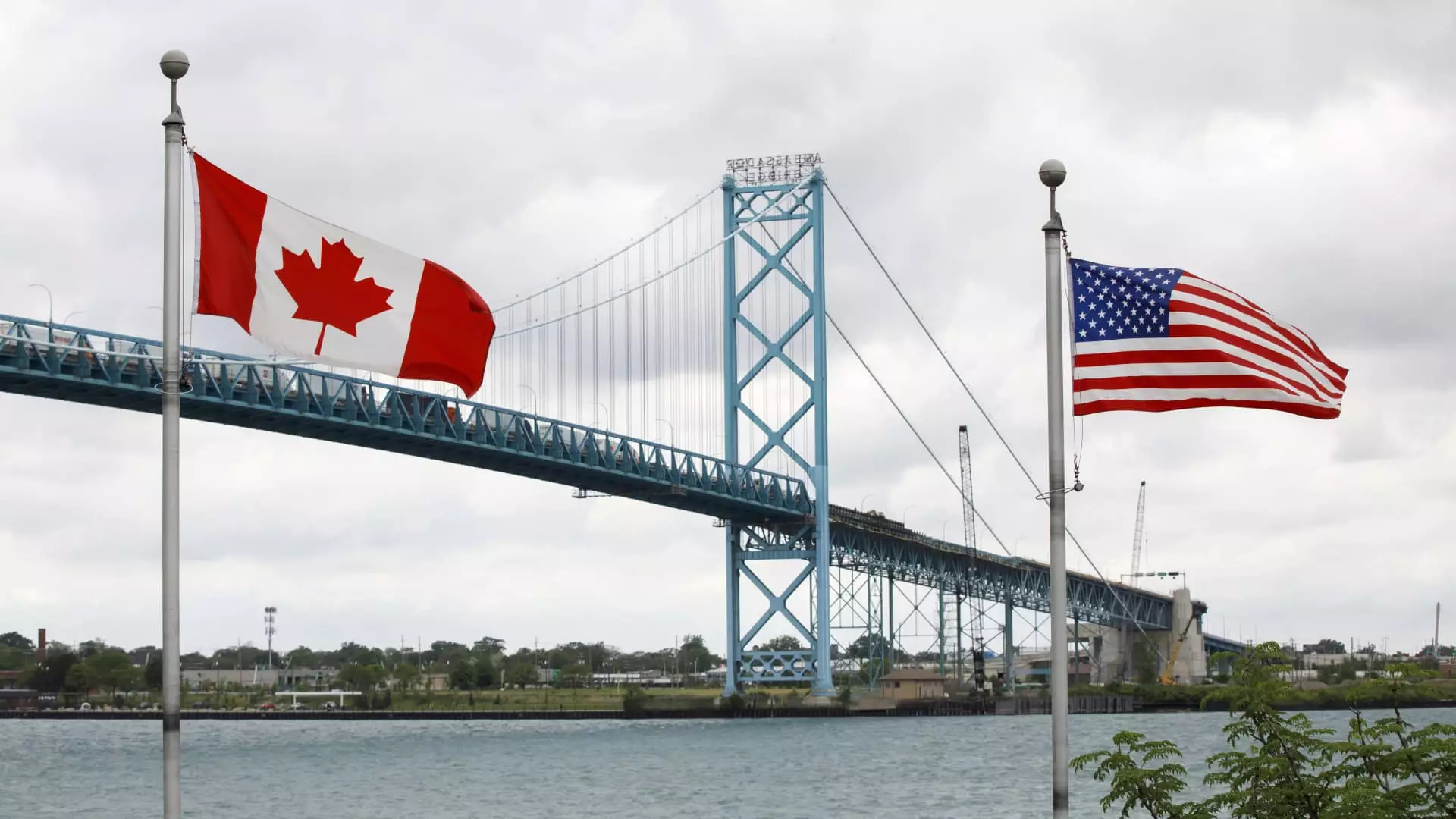As the prospect of imposing significant tariffs looms under President-elect Donald Trump’s administration, concerns mount about the potential fallout for Canada’s automotive sector. The proposed 25% tariffs on Canadian imports, particularly on vehicles and auto parts, threaten to disrupt a critical industry deeply intertwined with both Canadian and American economies. This article delves into the intricacies of this situation, examining the potential ramifications for workers, businesses, and cross-border relationships.
Ontario stands as the heart of Canada’s automotive industry, where five major manufacturers—Ford, General Motors, Stellantis, Toyota, and Honda—produced 1.54 million light-duty vehicles in the last year, predominantly for the U.S. market. This cross-border trade is significant, making automotive exports a vital component of the provincial economy. Ontario Premier Doug Ford voiced his apprehensions, stating, “It’d not only devastate Canadian jobs, but it’d devastate American jobs.” His remarks underscore the interconnectedness of the Canadian and U.S. automotive markets, raising the question of whether economic policies are taking these ties into account.
Understanding tariffs as taxes imposed on imports reveals their broader implications. Companies typically absorb these costs, which may then trickle down to consumers. The concern for consumers is not just about higher prices; it’s about the direct impact on the automotive market’s stability, where parts often cross the U.S.-Canada border multiple times before final assembly. This cyclical flow is at risk, which could lead to delays, increased production costs, and ultimately, job losses.
The stakes are considerable. Financial estimates by Wells Fargo suggest that tariffs on components could inflate vehicle prices by between $1,750 and $10,000. For an industry still recovering from the impacts of the COVID-19 pandemic, such price increases could create a significant barrier to market stability. This recovery has already been fragile; light-duty vehicle production saw an uptick from 1.1 million in 2021 to 1.54 million in 2023, yet it remains starkly below the 2.9 million produced at the industry peak in the year 2000. Disrupting this fragile growth with tariffs could reverse gains made over the last few years.
Canada’s Prime Minister Justin Trudeau is under pressure as he navigates these challenges, striving to maintain not just economic stability but also political unity. Ontario’s recent multimillion-dollar advertising campaign in the U.S. highlights its importance as a trading partner, attempting to mitigate the potential fallout should tariffs materialize.
Understanding the Trade Dynamics
Analyzing trade relationships reveals a telling story of interdependence. Premier Ford cites that trade dynamics between Ontario and the U.S. differ significantly from those involving Mexico. In fact, in the automotive sector, 95.3% of Canada’s auto exports and 57.7% of its overall auto imports involve the U.S. This dependence is indicative of a shared economic interest that transcends political rhetoric. Flavio Volpe, the head of the Canadian Automotive Parts Manufacturers’ Association, emphasizes, “The best tariff level for Canadian and American auto parts suppliers is zero.”
Volpe’s assertion underlines the necessity of preserving this delicate balance. The introduction of double-digit tariffs could have catastrophic implications for both sides of the border, potentially igniting a trade war that serves neither nation’s interests. Historical instances, such as the blockade at the Ambassador Bridge by Canadian truck drivers in 2022, clearly illustrated how even temporary disruptions can halt production and create widespread chaos in the automotive supply chain.
A New Path Forward
Amidst this uncertainty, industry leaders are calling for collaboration rather than confrontation. Ford urges the focus to shift away from friction with Canada, stating that efforts should be directed toward addressing challenges posed by countries like China. “We should be focusing on China and Mexico, not on our closest ally in the entire world,” he argues, promoting a vision of a unified North American economic front.
As the automotive industry navigates this complex landscape, it faces not only the immediate concerns of tariffs but also longer-term challenges such as the transition to electric vehicles (EVs). The pace of EV adoption has yet to meet expectations, and with Trump’s intentions to cut EV subsidies, the industry may find itself at a crossroads. The uncertainty surrounding governmental policies further complicates this transitional landscape, contributing to apprehension among manufacturers and policymakers alike.
The threat of tariffs hangs heavily over the Canadian automotive sector, threatening to unravel years of collaborative progress and economic interdependence. As the situation evolves, stakeholders on both sides must advocate for approaches that prioritize stability, cooperation, and shared prosperity to safeguard the future of North America’s automotive industry.

